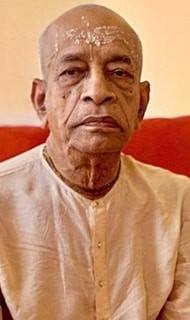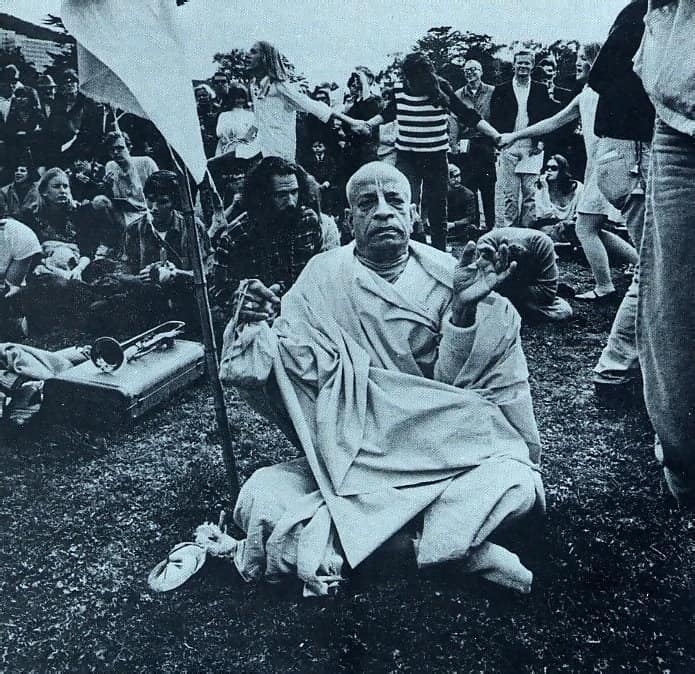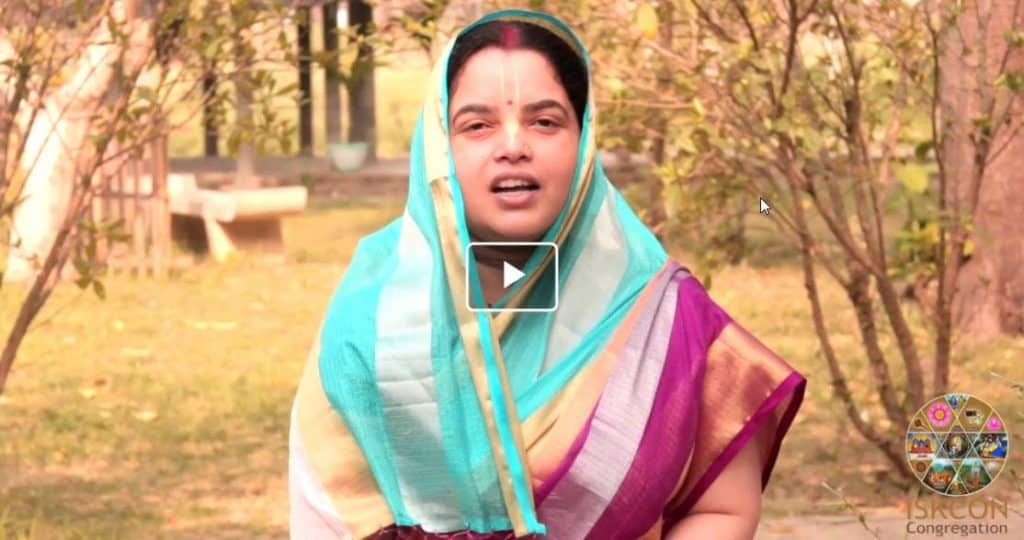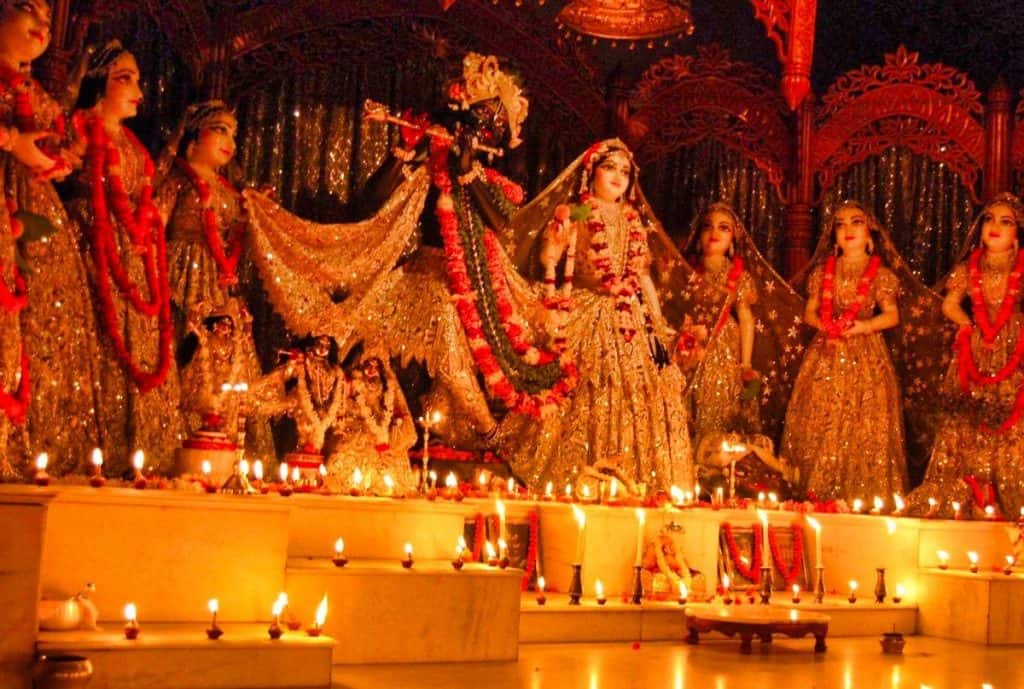The sankirtan movement of Lord Caitanya is compared – by Srila Bhaktivinoda Thakura – to a marketplace. The goods are the holy names and the purchasing power is one’s faith.
In this marketing, some approaches are more successful, more effective – some are less.
ISKCON’s predominant function is to spread the method for self-realization for this age, the yuga-dharma: chanting of the holy names of Krsna.
Now, this spreading of the chanting – and of the overall culture of bhakti – takes different shapes according to different circumstances. Some are cultural, some political, some economic, some technological, etc. Each situation indicates more appropriate and effective means, better “business models” – plans for the successful operation, identifying the intended customers, the products and how they are presented, etc.
Srila Prabhupada often referred our mission as “our business”: “Our business is this: that people are suffering for want of knowledge in Krsna consciousness. So as far as possible, try to enlighten them.” (Room Conversation, Tehran, 12 Aug 1976)

1. ISKCON Started as a Youth Movement
Youth is the natural phase in life in which people – especially inquisitive ones – question their sense of identity – or try to build one – and search for meaning.
Youths are generally less hindered by responsibilities
ISKCON began as a youth movement, attracting young Americans and Europeans in their late teens and early twenties. And, of course, it helped a lot that the atmosphere of the sixties and early seventies was ebullient with interest in Eastern spirituality and vibrating with a spirit of rejecting the status quo.
As Srila Prabhupada put it: “Actually, the hippies are our best customers.” (Letter to Goursundar, 13 July 1969)

But hippies, as a sociological phenomenon, came and went.
What was a major, spontaneous and influential movement, simply disappeared. What that meant for our “business model”? Simply put, after the hippy movement evaporated, ISKCON had to find another “customer base.”
2. Indian Diaspora
This short article doesn’t attempt to be a thorough historical analysis of the 50-plus years of the International Society for Krsna Consciousness; it’s only an invitation at applying the idea of business model to the spreading of the culture of bhakti.
After the “hippy years,” a natural ally of and target audience for ISKCON have been the Indian expatriates of Hindu background. Their cultural identity with the message of Krsna made it possible for them to become attracted to and involved with ISKCON.
If we analyze the West, especially the United States, a major portion of the followers and supporters of ISKCON come – now and in the last couple of decades – from the families of Indian expatriates. An important subgroup is the IT professionals
Krsna consciousness is beyond time and space, of course, but the fact of being born in a tradition that naturally honors, say, the Bhagavad-gita, helps in feeling a natural sense of connection with the message of Krsna.
3. Blockbusters & Netflix
A subject of study for business administration is the story of the demise of Blockbusters – once a flourishing enterprise – and the raise of Netflix.

In short, Blockbusters’ business was to rent movies in the form of the bulky VHS tapes (do you remember them? Some of you might not). Customers had to go to the shop and rent the tape. They also had to return it within a deadline to avoid a penalty.
With the advent of the
Blockbusters went bankrupt in 2010.
Netflix is now worth more than 143-billion US dollars.
Legendary within the business community is the fact that in 2000, Reed Hastings, the owner of Netflix, approached former Blockbuster CEO John Antioco and offered him Netflix for a mere $50 million. Antioco declined the offer.
4. Temples & Home Centers
Back to ISKCON: in many parts of the world our business model, our strategy for spreading the holy name and the culture of bhakti has been to open center, develop it into a full-fledged temple with elaborate Deity worship, while trying to attract temple residents and temple worshipers.
The strategy has worked well in many places – and still works very well in some.
In others the approach has seen a steep decline in “returns”: some temples that, say, 40 years ago were full of devotees now they barely survive, with the
This is not an extended sociological treatise and we won’t delve in all the factors that make a strategy succeed or fail; but it’s a fact that in terms of “returns on investment,” in terms of the number of people introduced to the path of bhakti-yoga, in some countries the opening of temples certainly does not represent the best or most effective approach
Interestingly, on a number of
“It is not very difficult to open a center for our activities. You can remain in
Srila Prabhupada even wrote about the concept in Sri Caitanya-
“Everyone can execute the cult of Krsna consciousness at home, as ordered by the Lord. Everyone can congregationally chant the holy name of Krsna, the Hare Krsna maha-mantra. One can also discuss the subject matter of the Bhagavad-gita and Srimad-Bhagavatam and install Deities of Radha-Krsna or Gaura-Nitai or both and worship them very carefully in one’s own home. It is not that we have to open different centers all over the world. Whoever cares for the Krsna consciousness movement can install Deities at home and, under superior guidance, worship the Deity regularly, chanting the maha-mantra and discussing the Bhagavad-gita and Srimad-Bhagavatam.” (Sri Caitanya-caritamrita, Madhya-
Of course, living in a temple still offers a magnificent opportunity for absorption and training in bhakti-yoga, but often – in a number of countries – it’s hard to find many “customers” willing to become
The method of teaching people to practice at home and at the same time spread the chanting has many advantages. It encourages them to take responsibility, to make spiritual advancement and to become exemplary; and it makes Krsna consciousness available to the neighboring residents anywhere there are devotees. And when a number of devotees form a larger community, they generally naturally wish to establish a larger center
When data is analyzed and results studied, it might become obvious that inspiring home centers could be one of the best business models for spreading Krsna consciousness in the modern world.
People already have a place to stay. People already know other people. When these people become God conscious they can start turning their place into a temple, as envisioned by Srila Prabhupada: “This Krsna consciousness movement wants to see that every house has become a temple of Krsna. That is our program.” (Lecture on Bhagavad-gita 7.1, Ahmedabad, 13 Dec 1972).
After all, a temple is what a temple does. What do you think?
If you found these ideas stimulating, please comment and share it – and you can do it right now.



